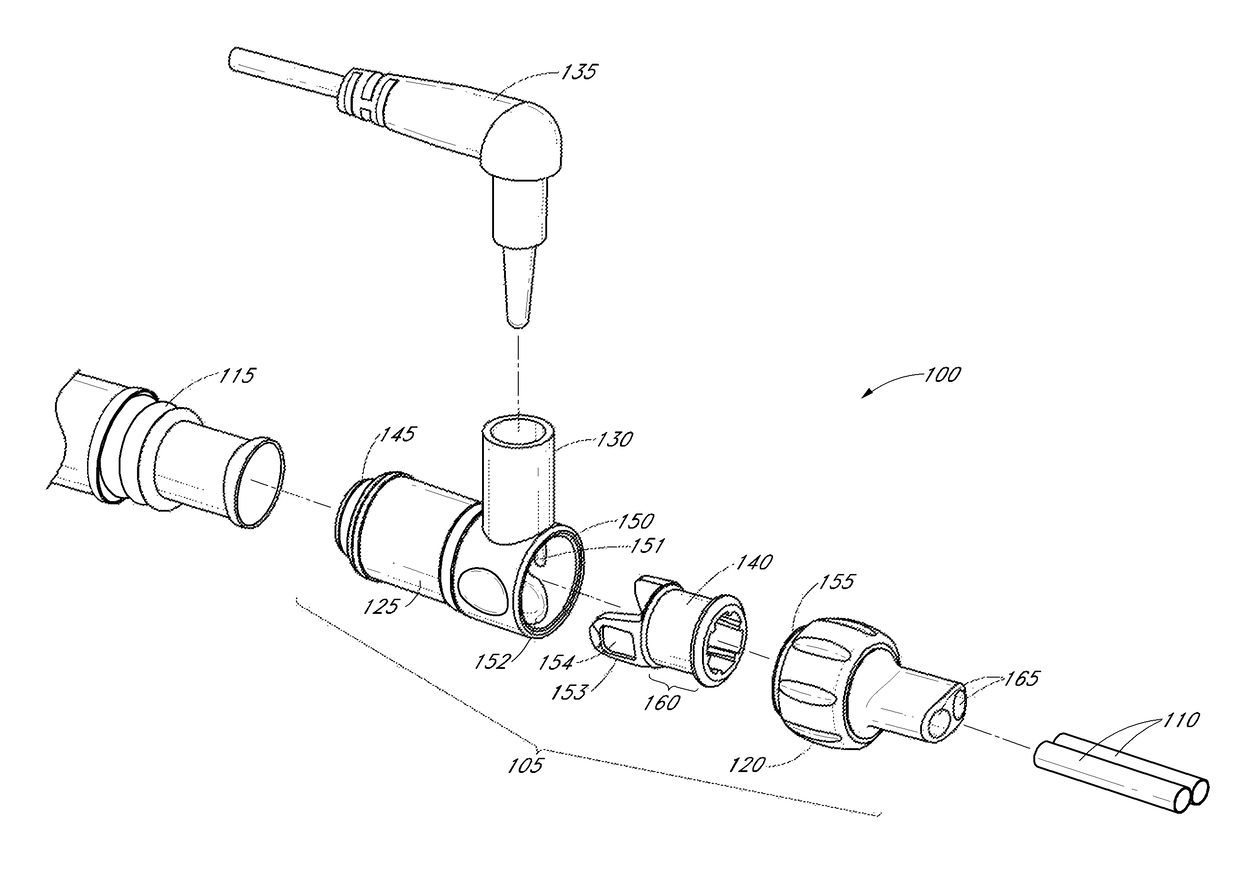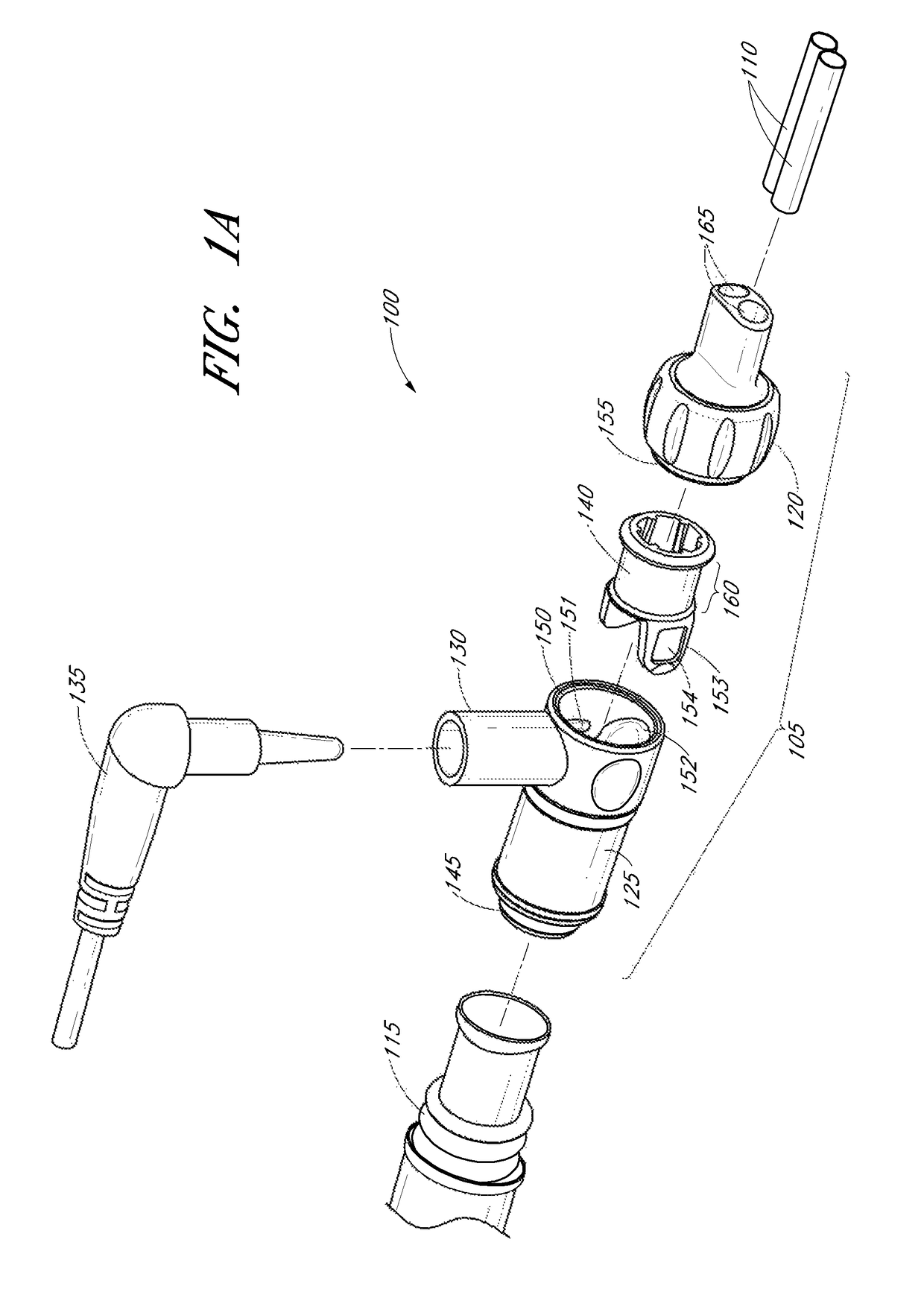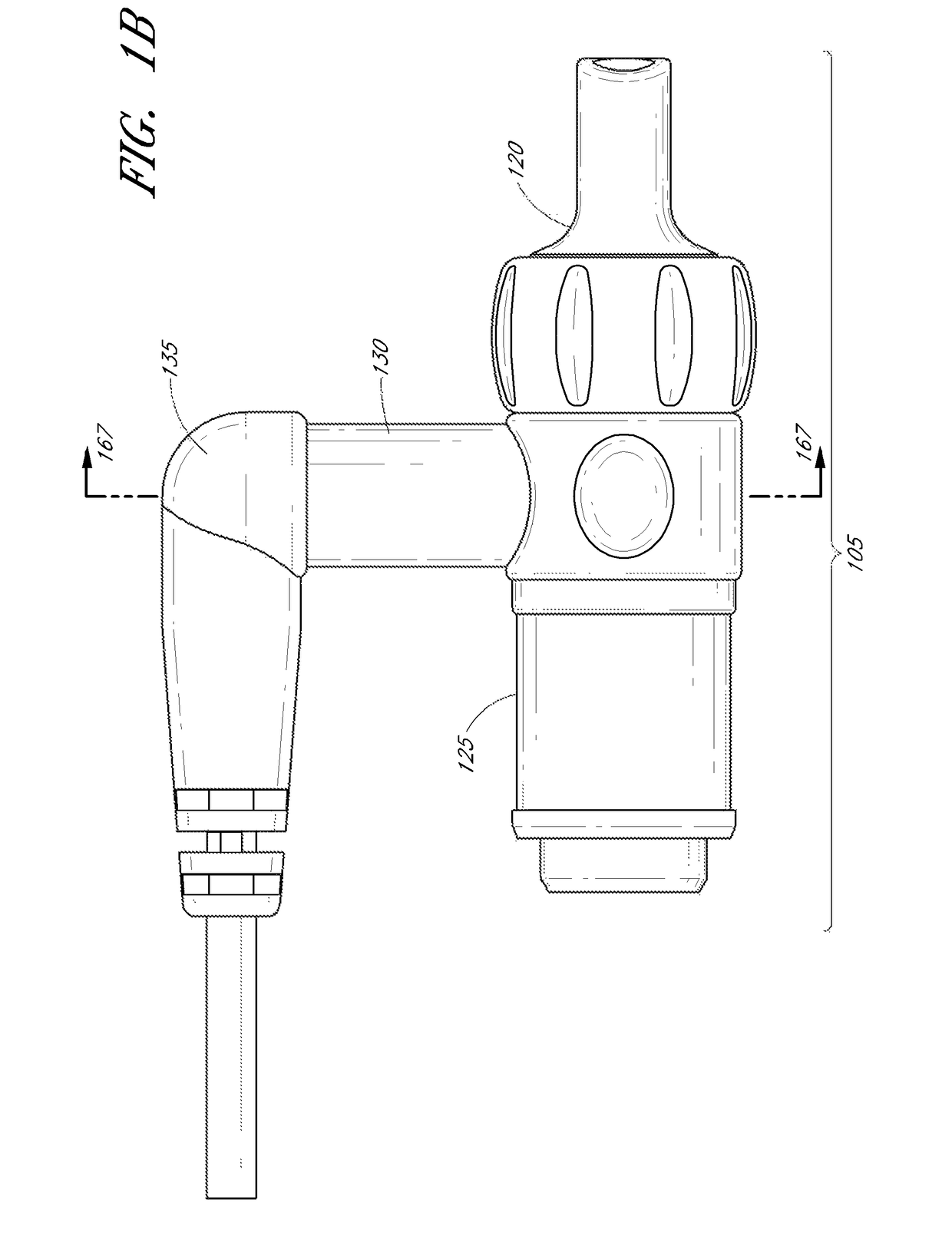Conduit connector for a patient breathing device
a patient breathing device and connector technology, applied in the field of connectors for gas delivery hoses, can solve the problems of increasing the potential variance between the sampled air and the air inhaled by the patient, patient discomfort or limiting the airflow of the cannula, and achieve the effect of increasing patient comfor
- Summary
- Abstract
- Description
- Claims
- Application Information
AI Technical Summary
Benefits of technology
Problems solved by technology
Method used
Image
Examples
Embodiment Construction
[0028]FIGS. 1A and 1B illustrate a perspective view and side view, respectively, of a gas delivery conduit 100 comprising an embodiment of a connector 105 for attaching a first tube 110 from a nasal cannula, face mask, intubation tube or other breathing device for a patient with a second tube 115 from a respirator, humidifier, breathing circuit, or other airflow device for providing gas to the patient. The connector can allow components of the gas delivery conduit 100 to be connected or disconnected from each other, thus facilitating disconnection and reconnection of the breathing device and airflow device with potentially minimal disturbance to the patient or gas delivery system.
[0029]For example, a patient can receive humidified, oxygenated and / or pressurized gases through a nasal cannula 110 connected to the gas delivery tube 115 that in turn is connected to a humidifier or respirator. For ease of explanation, the following disclosure refers to embodiments of the connector for co...
PUM
 Login to View More
Login to View More Abstract
Description
Claims
Application Information
 Login to View More
Login to View More - R&D
- Intellectual Property
- Life Sciences
- Materials
- Tech Scout
- Unparalleled Data Quality
- Higher Quality Content
- 60% Fewer Hallucinations
Browse by: Latest US Patents, China's latest patents, Technical Efficacy Thesaurus, Application Domain, Technology Topic, Popular Technical Reports.
© 2025 PatSnap. All rights reserved.Legal|Privacy policy|Modern Slavery Act Transparency Statement|Sitemap|About US| Contact US: help@patsnap.com



